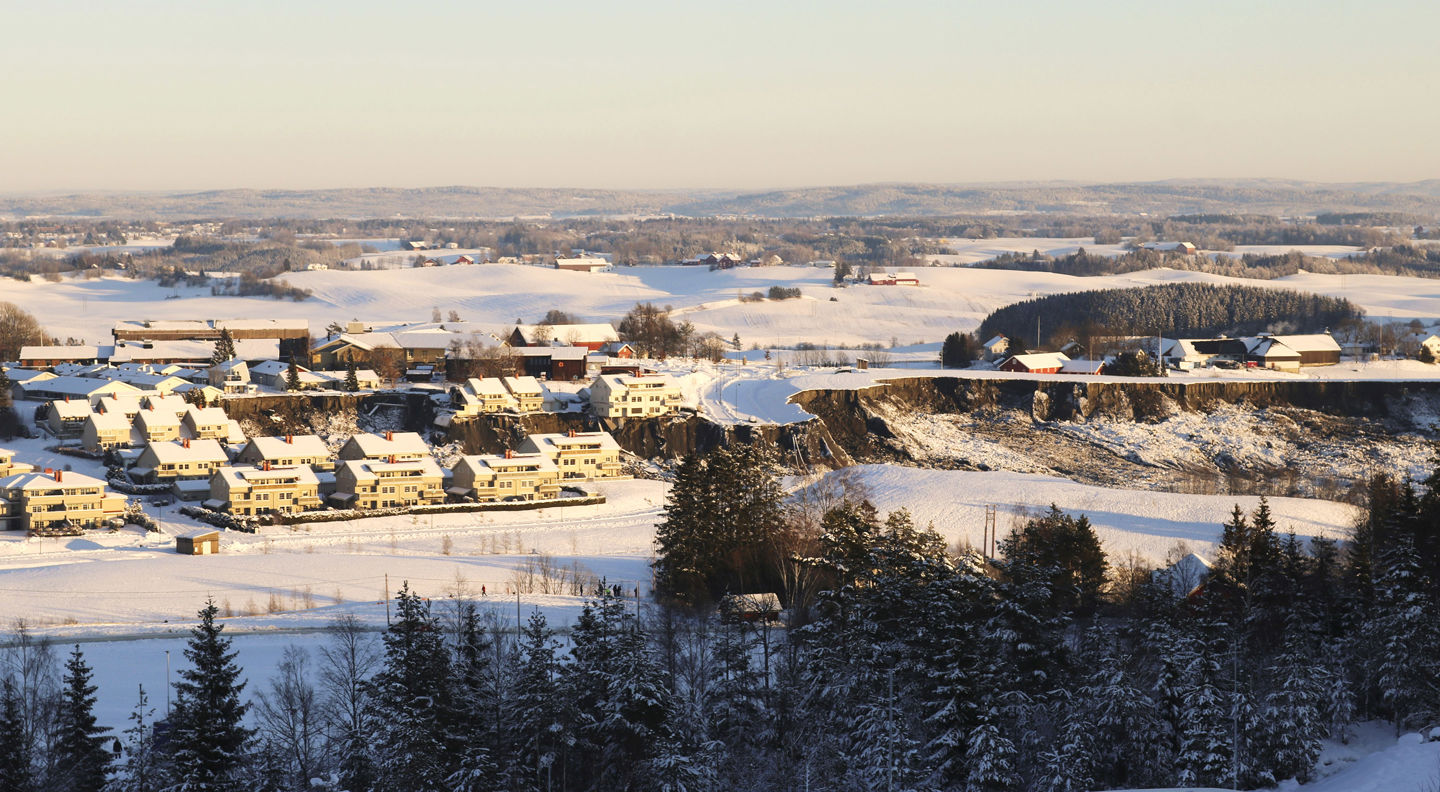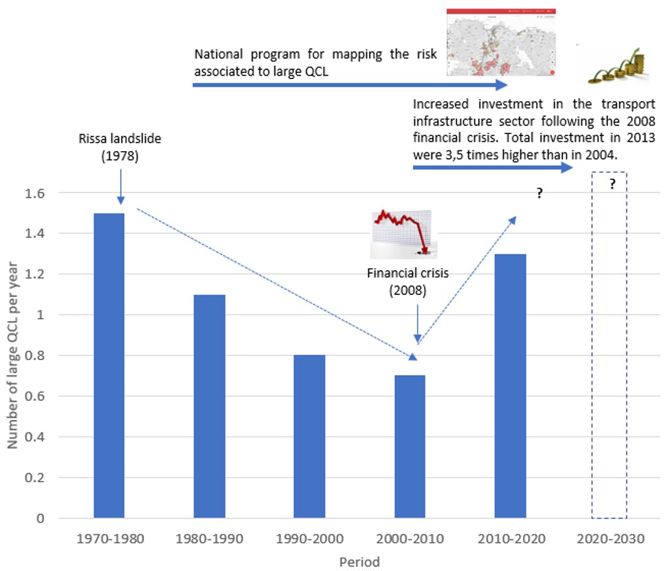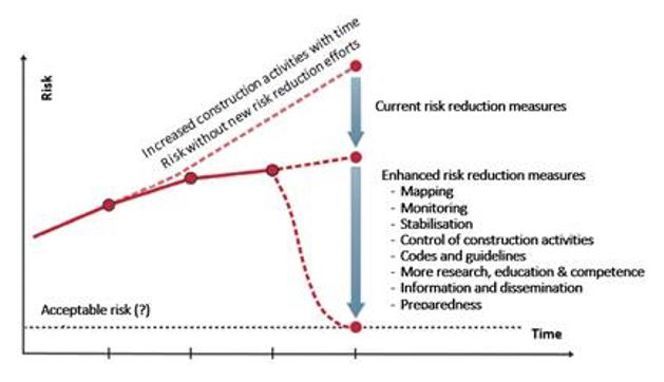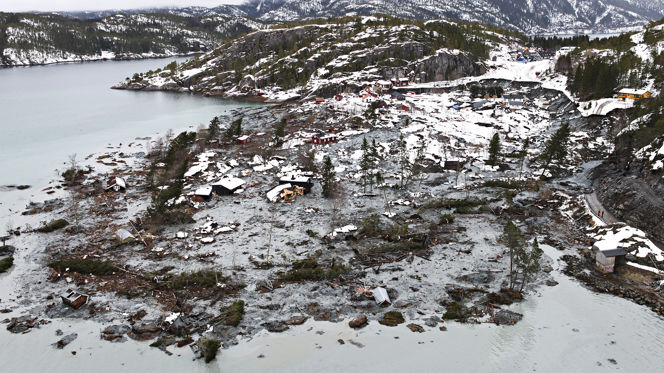About the Center
Quick clay landslides (QCL), with their retrogression characteristics and extreme mobility, pose a significant risk to human lives, infrastructure and ecosystems in the Northern countries of the world. This was exemplified on Dec. 30th, 2020, when a catastrophic QCL in Gjerdrum led to 10 fatalities, the evacuation of over 1600 residents, and the destruction of 31 houses, roads, utility lines, ecosystems downstream in the fragile ravine and agricultural land.

Quick clay landslide frequency has increased from 0.7 to 1.3 events per year in the last decade. The reasons for this include i) increase in infrastructure development on and near quick clay areas, ii) worsening slope stability over time due to natural processes such as erosion, rainfall and floods, and iii) a misunderstanding of the existing hazard and risk maps.

Figure: L’Heureux, J.S., Høydal, O.A., Paniagua Lopez, A.P. and Lacasse, S., 2018. Impact of climate change and human activity on quick clay landslide occurrence in Norway. In Proceedings of the 2nd JTC1 workshop triggering and propagation of rapid flow-like landslides, Hong Kong
After the deadly QCL in Gjerdrum, a panel was appointed by the government of Norway to assess how such disasters can be avoided in the future. This resulted in report NOU 2022:3. To reduce the risk related to quick clay in the future, the panel points to the following (see figure below). Quick clay landslides can be avoided through preventive measures, improved knowledge, the use of new technology in hazard and risk mapping, and ensuring that people working in quick clay areas have enough competence.

How new preventive mitigation can reduce risk due to landslides (after NoU, 2022:3)
The International Quick Clay Center (IQCC) aims to ensure safe communities and safe infrastructure when building, living, and farming over quick clay by:
- Providing an open arena for the geo community
- Boosting R&D collaboration between the industry, authorities, and the R&D sector in an open fashion
- Educating and promoting the next generation(s) of landslide experts
What will the center accomplish?
- More targeted organization of related R&D proposals to national and international funding agencies
- Increase the knowledge and raise awareness on quick clay
- Increase the number of geotechnical students
- Better coordination of activities among various stakeholders in Norway and internationally
The center thereby directly responds to the suggestions outlined in Gjerdrumutvalget's second report (NOU) as presented on March 28, 2022

QCL in Kattmarka near Namsos in mid Norway, 13th March 2009. The whole area, about 250 m wide, with houses and dwellings slid out and were moved about 100 m to the sea.